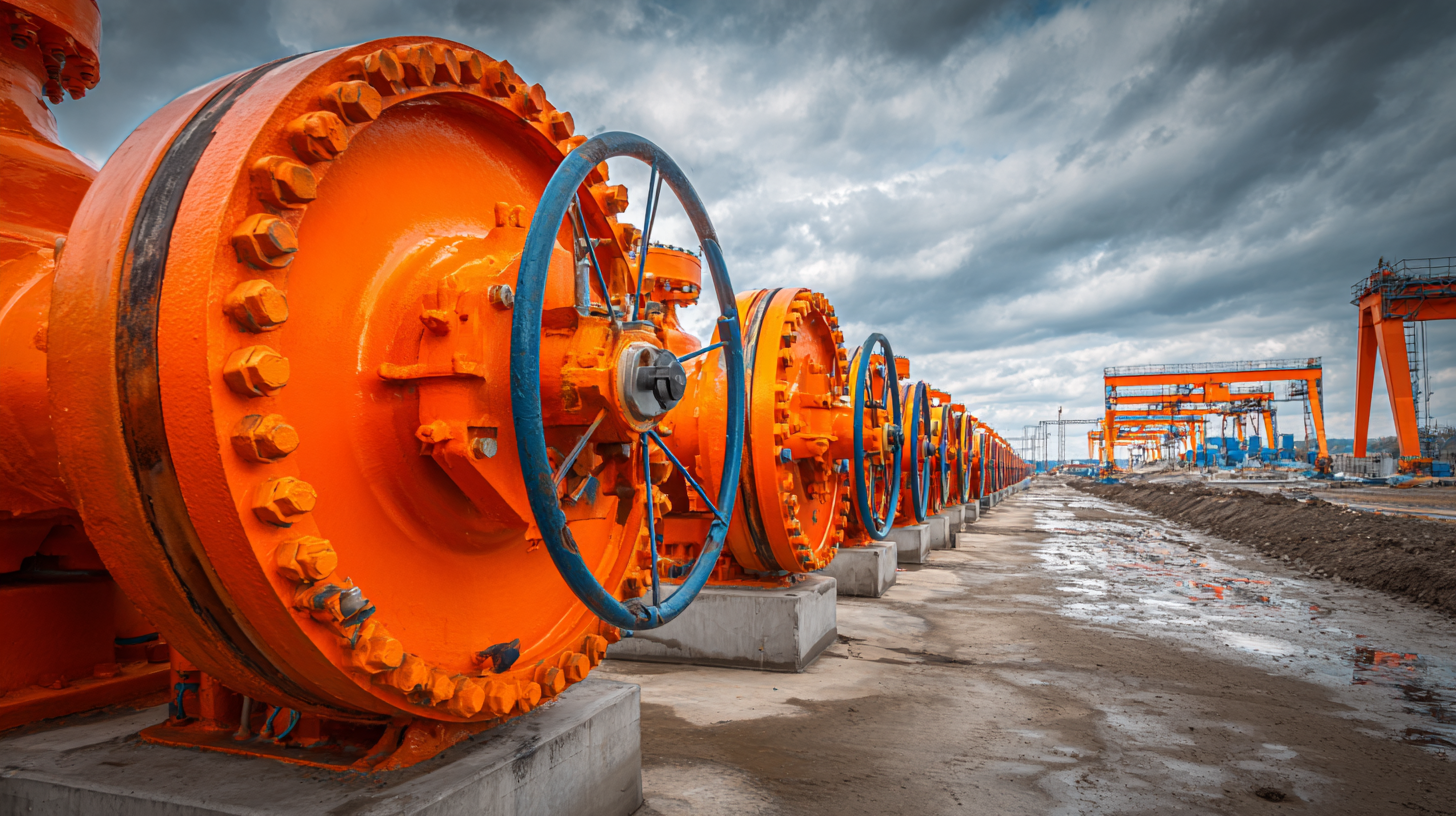Quality Products
At a Fair Price
Wholesale Provider
Of Valves & Fittings
- HOME
- Products
- Ball Valves
- Bull Plugs & Swages
- Butterfly Valves
- Check Valves
- Cushion / Flow Tees & Bleed Rings
- Enhanced Oil Recovery
- Floating Ball Valves
- Foot Valves
- Forged Steel Fittings
- Forged Steel Outlets
- Gaskets-Insulation Kits
- Gate Valves
- Gate, Globe & Check Valves
- Malleable Fittings
- Needle Valves
- Nipples
- Piston Valves
- Plug Valves
- Stainless Steel Flanges, Fittings & Nipples
- Strainers
- Studs
- Trunnion
- Unions
- Weld Fittings & Flanges
- Manufacturers
- Advance
- American Block
- Anvil
- Balon
- Bonney Forge
- Champion
- Clayton Mark
- Crane
- Daniel
- DMIC
- GMI
- Galli & Cassina
- Hackney-Ladish
- JMC
- Lone Star
- MATCO
- Marpac-McCanna
- National Flange
- National Gasket
- Nordstrom
- Nutron
- PPI
- SHARPE
- SMI
- TEXSTEAM
- TEX-THREAD
- Titan
- USA Fastner
- Vogt
- Weld Bend
- Westbrook
- Wheatley
- Williams
- WKM
- Wolar
- Locations
- Contact
- Blog
- Careers
- Get a Quote
- HOME
- Products
- Ball Valves
- Bull Plugs & Swages
- Butterfly Valves
- Check Valves
- Cushion / Flow Tees & Bleed Rings
- Enhanced Oil Recovery
- Floating Ball Valves
- Foot Valves
- Forged Steel Fittings
- Forged Steel Outlets
- Gaskets-Insulation Kits
- Gate Valves
- Gate, Globe & Check Valves
- Malleable Fittings
- Needle Valves
- Nipples
- Piston Valves
- Plug Valves
- Stainless Steel Flanges, Fittings & Nipples
- Strainers
- Studs
- Trunnion
- Unions
- Weld Fittings & Flanges
- Manufacturers
- Advance
- American Block
- Anvil
- Balon
- Bonney Forge
- Champion
- Clayton Mark
- Crane
- Daniel
- DMIC
- GMI
- Galli & Cassina
- Hackney-Ladish
- JMC
- Lone Star
- MATCO
- Marpac-McCanna
- National Flange
- National Gasket
- Nordstrom
- Nutron
- PPI
- SHARPE
- SMI
- TEXSTEAM
- TEX-THREAD
- Titan
- USA Fastner
- Vogt
- Weld Bend
- Westbrook
- Wheatley
- Williams
- WKM
- Wolar
- Locations
- Contact
- About
- Careers
- Get a Quote
The Role of Butterfly Valves in Modern Industry: A Comprehensive Overview
In today's industrial landscape, the efficiency and reliability of fluid control systems are paramount, and butterfly valves have emerged as a critical component in various applications. According to a recent market research report by Research and Markets, the global butterfly valves market is projected to witness significant growth, with a CAGR of over 5% from 2021 to 2026, driven by increasing demand in sectors such as oil and gas, water treatment, and power generation.

These versatile valves are favored for their lightweight design, quick operation, and low maintenance requirements. Their ability to regulate flow with minimal pressure drop makes butterfly valves indispensable in modern process control systems. As industries evolve, understanding the role and application of butterfly valves becomes essential for engineers and decision-makers aiming to optimize performance and sustainability in their operations.
The Essential Features of Butterfly Valves in Industrial Applications
 Butterfly valves have become a pivotal component in modern industrial applications, renowned for their compact design and efficiency in controlling flow. These valves utilize a rotating disc to regulate fluid passage, creating a robust yet straightforward mechanism suitable for various industrial settings. According to a recent market report by Mordor Intelligence, the global butterfly valve market is expected to grow at a CAGR of 7.3% from 2021 to 2026, underscoring their increasing significance in sectors like chemical processing, water treatment, and HVAC systems.
Butterfly valves have become a pivotal component in modern industrial applications, renowned for their compact design and efficiency in controlling flow. These valves utilize a rotating disc to regulate fluid passage, creating a robust yet straightforward mechanism suitable for various industrial settings. According to a recent market report by Mordor Intelligence, the global butterfly valve market is expected to grow at a CAGR of 7.3% from 2021 to 2026, underscoring their increasing significance in sectors like chemical processing, water treatment, and HVAC systems.
The essential features of butterfly valves include quick operation, low maintenance, and excellent sealing capabilities. Their lightweight design allows for easy installation and minimal space consumption, making them ideal for tight-fitting applications. Moreover, advancements in materials, such as stainless steel and PVC, have enhanced their durability, enabling them to withstand highly corrosive environments. According to the Valve Manufacturers Association, nearly 40% of industries prefer butterfly valves for their reliability and cost-effectiveness in handling high flow rates.
Tips: When selecting butterfly valves, consider factors such as pressure rating, size, and application needs. Ensure that the valve's material aligns with the fluid type to prevent wear and corrosion. Regular maintenance checks are also crucial to ensure optimal performance and longevity, especially in high-demand environments.
Types of Butterfly Valves: A Guide to Choosing the Right One
When it comes to choosing the right type of butterfly valve for specific industrial applications, understanding the various options available is crucial. Butterfly valves have gained popularity over traditional globe valves due to their compact design and efficient flow control capabilities. According to a recent study, the wafer-type butterfly valve is an excellent alternative for fluid control in utility services, especially within the offshore industry. This type provides significant advantages such as reduced weight and simpler installation, which are essential in environments where space and accessibility are limited.
Different types of butterfly valves cater to specific needs. For instance, the resilient-seated butterfly valve is ideal for general applications due to its cost-effectiveness and versatility, while the high-performance butterfly valve is suitable for more demanding environments, offering better sealing and higher pressure ratings. An effective valve selection process involves evaluating factors such as media type, temperature, pressure, and installation requirements, which directly impacts performance and reliability. The comprehensive understanding of these types ensures that industries can optimize fluid control systems while minimizing costs associated with maintenance and replacements.
The Role of Butterfly Valves in Modern Industry: A Comprehensive Overview - Types of Butterfly Valves: A Guide to Choosing the Right One
| Type of Butterfly Valve | Materials Used | Application Area | Pressure Rating | Temperature Range |
|---|---|---|---|---|
| Lug Type Butterfly Valve | Cast Iron, Stainless Steel | Water Supply, HVAC | 150 psi | -20°C to 120°C |
| Wafer Type Butterfly Valve | Aluminum, PVC | Chemical Processing, Wastewater | 200 psi | 0°C to 90°C |
| Butterfly Valve with Actuator | Carbon Steel, PTFE | Oil & Gas, Power Generation | 600 psi | -40°C to 200°C |
| High Performance Butterfly Valve | Stainless Steel, Teflon | Pharmaceutical, Food Processing | 300 psi | -10°C to 150°C |
| Teflon Lined Butterfly Valve | Carbon Steel, PTFE | Corrosive Chemicals, Pulp and Paper | 150 psi | -30°C to 120°C |
Advantages of Using Butterfly Valves in Modern Manufacturing
Butterfly valves have become a cornerstone in modern manufacturing due to their unique design and operational efficiencies. One of the primary advantages of using butterfly valves is their space-saving feature. Unlike traditional gate or globe valves, butterfly valves require minimal installation space, making them ideal for environments where space is at a premium. This compact design not only conserves valuable real estate within industrial plants but also allows for easier integration into existing piping systems.

Another significant benefit is their rapid operating capability. Butterfly valves can be opened or closed with just a quarter turn of the handle, enabling quick response times in processes that demand precise control over fluid flow. This efficiency can lead to enhanced productivity, allowing manufacturers to streamline operations and reduce downtime. Furthermore, their simple construction means fewer components are involved, which translates to lowered maintenance requirements and costs.
By incorporating butterfly valves into their systems, manufacturers can achieve a balance of performance and economy that is essential in today’s competitive industrial landscape.
Installation and Maintenance Best Practices for Butterfly Valves
When it comes to the installation of butterfly valves, precision and attention to detail are paramount. First, it is essential to select the appropriate valve size and type based on the specific application and system requirements. Ensure that the pipe ends are clean and free of debris; this will help achieve a proper seal and prevent potential leaks. During installation, adhere to the manufacturer's guidelines regarding the orientation of the valve—whether it should be installed horizontally or vertically—as this can greatly influence its performance.
Maintenance best practices for butterfly valves are equally crucial for ensuring longevity and reliability. Regular inspection of the valve's stem, seat, and disc is necessary to identify signs of wear and tear. Lubrication of moving parts, as recommended by the manufacturer, can minimize friction and avoid premature failure. Additionally, keeping the valve actuators and control systems in optimal working condition ensures efficient operation. By following a scheduled maintenance routine, operators can significantly reduce downtime and enhance the overall efficiency of their systems.
Future Trends in Butterfly Valve Technology and Applications
Butterfly valves have long been a staple in various industrial applications due to their simple design and efficient performance. As industries evolve, the future trends in butterfly valve technology are becoming increasingly significant. According to a report from MarketsandMarkets, the global butterfly valve market is projected to reach $6.4 billion by 2026, growing at a CAGR of 4.5% from 2021. This growth is largely driven by advancements in automation and the increasing demand for energy-efficient solutions across sectors such as oil and gas, water treatment, and chemical manufacturing.
Innovations in materials and smart technology are shaping the landscape of butterfly valves. Manufacturers are now using composite materials that offer enhanced durability and resistance to corrosive environments, thus extending the lifespan of these valves. Moreover, the integration of Internet of Things (IoT) capabilities is on the rise, allowing real-time monitoring and remote control of valve operations. This shift towards smart technology not only improves operational efficiency but also enables predictive maintenance, reducing downtime and overall operational costs. As industries embrace these trends, butterfly valves will remain a crucial component in the quest for greater efficiency and sustainability.
The Role of Butterfly Valves in Modern Industry
Related Posts
-

7 Best Butterfly Valves for Enhanced Industrial Performance in 2024
-

How to Achieve Perfect Weld Bend Specifications for Your Projects
-

How to Choose the Right Flanges and Fittings for Your Project
-

5 Essential Tips for Choosing the Right Ball Valves for Your Applications
-

10 Essential Tips for Choosing the Right Flanges and Fittings
-

Exploring Innovative Alternatives to Stainless Fittings: Industry Insights and Trends
